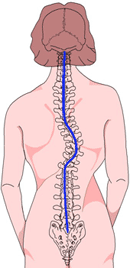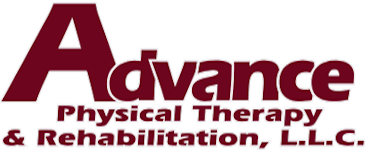Pick a Body Area
 Scoliosis
ScoliosisScoliosis is a lateral curvature of the spine. There may be one curve ("C" curve) present or two curves ("S" curve). Scoliosis is technically defined as a lateral curve of the spine greater than 10 degrees. Ten to 20 degrees of curvature is called mild scoliosis, 20-40 degrees is a moderate scoliosis, and greater than 40 degrees of curvature is a severe scoliosis.
Approximately 2-3 million people have scoliosis and there is no cure for the problem. In most cases (approximately 80%), the scoliosis is idiopathic in nature meaning there is no apparent cause. It affects all age groups and males as often as females. Infantile scoliosis affects children at birth. Juvenile scoliosis affect children between age 4 and puberty, adolescent scoliosis affects kids from puberty to adulthood, and there is also a classification of adult onset scoliosis. Female scoliosis patients are more likely to experience a progression of the disease.
Symptoms may include pain and fatigue and in severe cases difficulty with breathing, digestion, and walking.
Treatment typically consists of bracing for moderate curves and surgery for severe curves. Although there is little medical literature to prove the effectiveness of exercise for correction/improvement of a scoliosis curve, physical therapists are your best choice if you are looking for a customized exercise program for your scoliosis. Recommended exercises can decrease pain, stretch tight muscles, and strengthen the core spine/abdominal muscles.Possible Treatments
- Aerobic/Endurance Exercise Video
- Core Strengthening Video
- Electrotherapeutic Modalities
- Heat Pack Video
- Low Back Active Range of Motion Video
- Low Back Joint Mobilization Video
- Low Back Passive Range of Motion Video
- Low Back Resistive Range of Motion Video
- Posture Training Video
- Physical Agents
- Soft Tissue Mobilization Video
- Stretching/Flexibility Exercise Video
- Aerobic/Endurance Exercise
Possible Treatment Goals
- Improve Fitness
- Improve Function
- Optimize Joint Alignment
- Improve Muscle Strength and Power
- Improve Proprioception
- Improve Range of Motion
- Improve Relaxation
- Self-care of Symptoms
- Improve Safety
- Improve Tolerance for Prolonged Activities
Additional Resources
Disclaimer
The information in this medical library is intended for informational and educational purposes only and in no way should be taken to be the provision or practice of physical therapy, medical, or professional healthcare advice or services. The information should not be considered complete or exhaustive and should not be used for diagnostic or treatment purposes without first consulting with your physical therapist, occupational therapist, physician or other healthcare provider. The owners of this website accept no responsibility for the misuse of information contained within this website.
